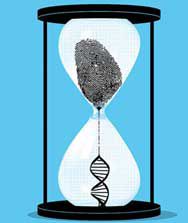Union Of India v/s Rhea Chakraborty: Behind The Veil Of Vice
Union of India v. Rhea Chakraborty: Behind the Veil of vice
Citation: SLP (Crl) No.-002127 / 2021Introduction:
Actor Sushant Singh Rajput's death had stirred a protest in the whole nation. The young actor's death was untimely and raised a lot of questions in the minds of the citizens. Rhea Chakraborty was charge sheeted due to her connection with the death of the actor under the Narcotic Drugs and Psychotropic Substances Act, 1985 after the allegations of her being a part of the 'drug dealers' gang were raised.
This landmark judgment raised a lot of issues such as whether a petition can be filed against the observations made by a court. We all know that a petition can be filed against the judgment of lower courts in front of the higher courts but the question of filing a petition against the obiter dicta of courts remained unanswered before this noteworthy judgment.
Background:
After the death of the famous actor Sushant Singh Rajput , allegations were raised that he was a drug addict and his girlfriend , Rhea Chakraborty was involved in illicit dealing of drugs and she was the one behind his death. The Bombay High court in this case had granted bail to the accused, Rhea while broadly interpreting Section 27A of the NDPS Act which provides a punishment for illicit trafficking and harboring of offenders for 10 years which may extend to 20 years plus a fine of rupees 1, 00,000 which may extend to rupees 2,00,000.
The court had observed that merely giving money to buy drugs and concealment of drug use by a person will not amount to " facilitating illicit trade'' and "harboring of offender " within the meaning of the impugned section. Harbouring means giving shelter to or hiding a criminal.
The high court bench of Justice SV Kotwal had granted bail to Rhea chakraborty while rejecting the claims of NCB that she was an active member of the drug dealing syndicate. The HC had observed that there were no reasonable grounds to convict the accused under section 27A or any other section of the NDPS Act. In response, the Central Government through, Narcotics control Bureau approached the Supreme Court challenging the abovementioned observations by the High court of Bombay.
Key Contentions raised in the case
The Central Government through NCB contented that the observations made by the High Court were fallacious and bogus. They were nothing but just some broad renditions which had no reasonable stand. The Central Government also contended that taking such a broad interpretation of Section 27A would render it futile or useless and it would become an arduous task to actually prosecute or convict someone under the impugned section.
It also raised the contention that the Government was not challenging the grant of the bail order to the accused but only the observations made by the High court of Bombay regarding illicit financing and harboring of a drug user .
Key issues raised in the case:
- Whether a petition can be filed against the observations made by a court in the higher court?
Key provisions concerned:
- Section 27 A of Narcotic Drugs and Psychotropic Substances Act, 1985
- Section 37 Narcotic Drugs and Psychotropic Substances Act, 1985
- Article 21 of the Indian constitution : Right to life and Personal Liberty
Judgment
The court while considering the arguments of both the sides held that a petition cannot be filed against the observations made by a court. Such petitions can only be filed against the judgments of lower courts. Widely interpreting the impugned section would render it useless and make it difficult to convict a person under Section 27 A. The court did not deal with the bail order issued to the accused but just dealt with the main issue of whether the observations made by a high court can be challenged or not.
Impact
This judgment stopped the commotion stirred by the death of the renowned actor Sushant Singh Rajput. The Bombay High court had held that there were no reasonable grounds to convict the accused under Section 27 A of the NDPS Act since the NCB had failed to provide a concrete evidence against the accused .The only section under which she could be convicted was Section 8(c) of the act however again there was no recovery of a commercial quantity of drug from the accused by the NCB.
The Bombay High Court had also rejected the contention that the actress was sought to be treated harshly so as to set an example in the minds of the common people. This judgment quashed her conviction and held her to be not guilty for the offence of drug dealing and the court ordered her to be released by furnishing a cash bail of Rupees 1, 00,000.
Recent developments
Recently, on 18 July, 2023 the honorable Supreme Court of India observed that the judgment delivered by the Bombay High Court was not to be treated as a precedent in any other cases. The ASG appearing on behalf of the NCB had contended that the bail order furnished was not to be challenged but the observations made by the High court were to be kept open for interpretation. The Supreme Court in reply stated that the Bombay High Court's judgment was not to be treated as a precedent.
Concluding thoughts:
The Indian actress, 28, at that time had become embroiled in a high –profile legal case of the death of Sushant Singh Rajput. The High court of Bombay had quashed her conviction and setting it aside had given a myopic view of the section 27 A of the NDPS Act. The NDPS act is an important legislation that seeks to prevent the illicit use of drugs and narcotic substances. This act is in line with a lot of international conventions and treaties.
Drug addiction is a disease that not only devours the mind of an individual but his life as a whole. Drug abuse occurs as a confluence of a lot of biological, social and psychological and psycho-social factors such as peer pressure, interfamilial conflicts, social rebelliousness, preexisting abuse history etc. The NDPS act seeks to promote rehabilitation of the offenders.
However, the act allows for a scientific and medical use of the drugs such as Cannabis which contains Cannabinoids which have therapeutic uses. The allegations of the involvement of the actress had stirred a lot of hate comments and social media posts against the actress all over India. The judgment is so important that even after 2 years this judgment comes in the names of the most high –profile criminal cases of India. Through this judgment the Supreme Court has emerged as a beacon of hope for the youth.
List of References:
- https://www.livelaw.in/top-stories/supreme-court-rhea-chakraborty-ndps-narcotic-drugs-act-bombay-hc-232999?infinitescroll=1
- https://www.lawyersclubindia.com/judiciary/union-of-india-vs-rhea-chakraborty-a-petition-cannot-be-filed-against-the-observations-made-by-a-court-5128.asp
- https://www.scconline.com/blog/post/2020/10/07/bom-hc-will-giving-money-to-another-for-consuming-drugs-mean-encouraging-and-financing-or-harbouring-as-envisaged-under-s-27-a-of-ndps-act-read-hcs-verdict-granting-bail-to-rhea-chakrabo/
- https://indiankanoon.org/doc/134581494/
- https://www.studocu.com/in/document/guru-gobind-singh-indraprastha-university/bba-llb/rhea-chakraborty-vs-union-of-india-and-anr-on-7-october-2020/22396843
Law Article in India
Legal Question & Answers
Lawyers in India - Search By City
LawArticles
How To File For Mutual Divorce In Delhi

How To File For Mutual Divorce In Delhi Mutual Consent Divorce is the Simplest Way to Obtain a D...
Increased Age For Girls Marriage

It is hoped that the Prohibition of Child Marriage (Amendment) Bill, 2021, which intends to inc...
Facade of Social Media

One may very easily get absorbed in the lives of others as one scrolls through a Facebook news ...
Section 482 CrPc - Quashing Of FIR: Guid...

The Inherent power under Section 482 in The Code Of Criminal Procedure, 1973 (37th Chapter of t...
The Uniform Civil Code (UCC) in India: A...

The Uniform Civil Code (UCC) is a concept that proposes the unification of personal laws across...
Role Of Artificial Intelligence In Legal...

Artificial intelligence (AI) is revolutionizing various sectors of the economy, and the legal i...








Please Drop Your Comments